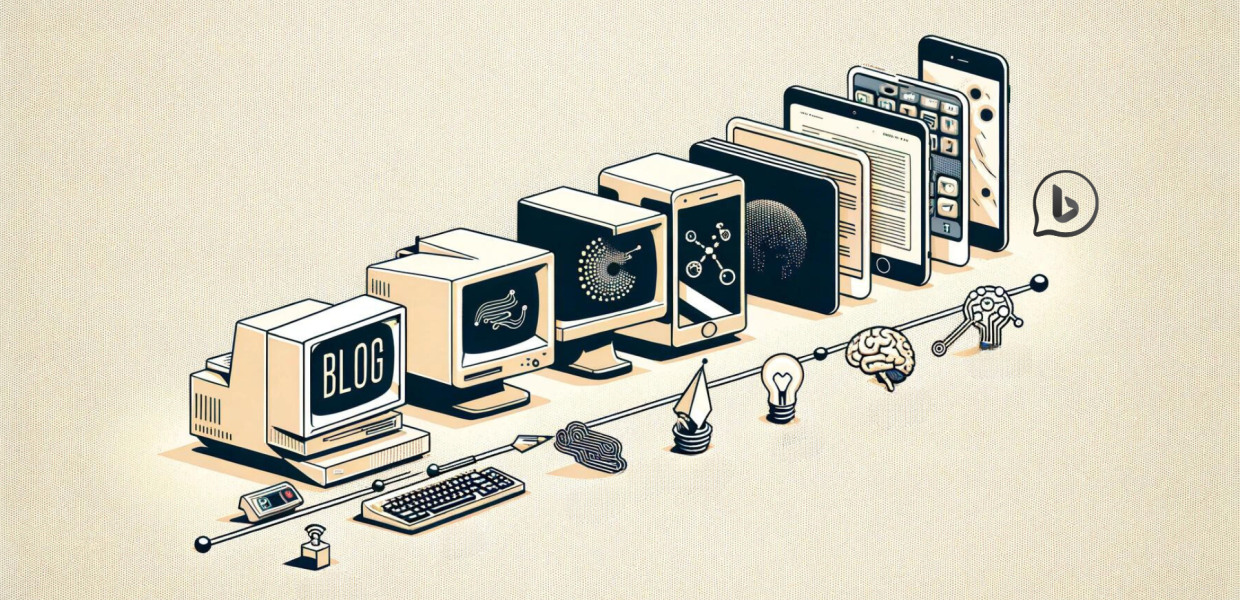
Image generated with assistance from DALL-E.
March 5, 2024
Updated March 18, 2024 11:41 a.m.
It was 1992. I was working at a small advertising and PR firm in Portland, Oregon, focused on B2B and crisis communications. I’d fallen in love with technology and was smitten with the early, pre-browser web, with Usenet and CompuServe, Prodigy. When I got my hands on TCP/IP software for my PC and grabbed a beta copy of the Mosaic browser, my mind was blown. I knew this was going to change the way companies and individuals communicated. I tried to convince wood product clients to purchase domains. I talked to The Oregonian about the opportunity of online journalism. I was not successful.
It was 2002. Blogs were starting to take off. I was in high-tech communications then, and suddenly could see a new nexus of influence emerging, one related to but independent from the media. News was being made on blogs; crises started with blog posts. I knew then that the work I was doing needed to change, and rapidly — and that while we used to think we had most of a day to come up with a plan for an issue or challenge, that we’d need to move a ton faster, and increase our understanding of influence if we were going to be successful.
It was February 2008. I was standing in the back of a conference presentation in San Francisco and decided that today was the day I’d join Twitter. I followed a few people, a few more, and then boom – the world opened tome. There was more news, more perspective, more connection and communication with influencers, reporters, and editors. As a senior communications professional, the ability to make news in real-time, respond in real-time, and connect in real-time, it was incredible. This explosion of social media and connection with a news focus reinvented the way we worked, and how we thought about speed — we no longer had days, we had hours to make decisions. I miss that Twitter.
It was early 2021. GPT-3 from OpenAIis released. A smart engineer at Microsoft developed a hack that allowed me access to the API using a copy-and-paste function. I was able to take massive text documents and summarize them, issue requests to create simple letters, and translate into different languages. When one of my direct reports retired, I combined the retirement email with the LinkedIn profile and had GPT-3 create an epic poem, which I read at the retirement party. There were challenges, but the utility was off the charts, even in hack mode. I started thinking.
It was September 2022. A small group of Microsoft executives met with OpenAI engineers in Redmond, Washington, where we saw a demo of GPT-4. It passed exams, translated documents, engaged in philosophical discussions, wrote papers, and answered medical questions. It was the most mind-blowing demo I’d seen in my entire career. I drove home, consumed with the thought of how my job would change in the year ahead.
It is December 2023. AI is reinventing how we work as communicators. We’re getting access to an incredible new set of tools to help us create, brainstorm, connect, and improve our process, speed, and capability. Here at Microsoft, we’re focused on putting a copilot or two in the hands of every person on the planet, to help them with whatever they want to get done.
For communicators, the best way to get there is to focus on three things:
- Experiment and pioneer: Be courageous. Play with the tools. Be a pioneer.
- Operate with a sense of urgency: Own your destiny. Reinvent ahead of demand.
- Drive culture change: Champion this next phase of communications with AI.
The thread is clear — technology has always had a massive impact on the art and science of communications, from the web to blogs to social and now to AI. We thrive best when we focus on the opportunity ahead and embrace what we do best. Too often, I see people thinking about AI as a black box, a single entity that is going to “do” something, either good or bad. Instead, it is a set of tools, new tools, ready for us to use. To do this, we must reject pessimistic and Panglossian thinking equally.
Frank X. Shaw is the chief communications officer at Microsoft. He is responsible for defining and managing communications strategies worldwide, company-wide storytelling, product PR, media and analyst relations, executive communications, employee communications, global agency management, and military affairs.
